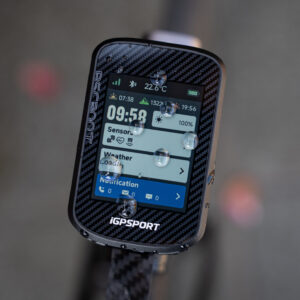The 2026 Tour de France, which will be staged between 4 and 26 July, was unveiled overnight at the Palais des Congrès de Paris before an audience of almost 3,500.
Following the Grand Départ in Barcelona, the race will visit each of France’s five mountain ranges. The Pyrenees, Massif Central, Jura, and Vosges will build up towards a climactic showdown in the Alps with two finishes on the Alpe d’Huez, including an unprecedented ascent from the Col de Sarenne on the eve of the finish in Paris.
It begins with the Grand Départ in Barcelona, Spain – notably a 19.7 km team time-trial on stage 1, the first time the Tour has opened this way since 1971. The second stage also finishes in Barcelona after a 178 km ride from Tarragona, incorporating a hilly finishing circuit.
In the first week, the route quickly transitions from Catalonia into France, entering the Pyrenees early (for instance, stage 6 ends at the Cirque de Gavarnie) and offering the first serious mountain test. The remainder of the first week features flatter stages favourable to sprinters, before the first rest day.
The second week shifts through the Massif Central, the Vosges, and Jura regions, mixing hilly terrain with mountainous finishes (for example, the Plateau de Solaison climb on stage 15). There is also a second rest day before the final week.
The final week centres on the Alps: a 26 km individual time-trial near Lake Geneva (stage 16) sets up the decisive mountain weekend. The final two high-mountain stages (19 and 20) finish on the legendary summit of Alpe d’Huez – one via the traditional 21 hairpins, the other via Col de Sarenne – where the general classification is likely to be decided. The Tour concludes with the traditional stage into Paris on the Champs-Élysées on 26 July (stage 21), following circuits around Montmartre.
The 2026 edition of the Tour de France Femmes will take place from 1–9 August 2026. It will span nine stages and cover 1,175 km – the longest distance in the race’s short history. The race will begin with a Grand Départ in Switzerland, with the first two stages engulfing Swiss terrain (starting in Lausanne and then to Geneva) before crossing into France.
The route features three flat stages, three hilly stages, one individual time trial (Stage 4: 21 km from Gevrey-Chambertin to Dijon) and two full mountain stages – including a historic first ascent of Mont Ventoux (Stage 7) and a thrilling finish into Nice on the Côte d’Azur (Stages 8-9). Organisers highlight that the route accumulates around 18,795 m of vertical gain, marking a significant elevation in difficulty compared to previous editions.
Nicola Rutzou – a long-time contributor and, most recently, the editor of Bicycling Australia. Nicola is a keen Sydney-based road cyclist who writes reviews, news, and destination pieces, as well as the weekly e-newsletter for BA online.


